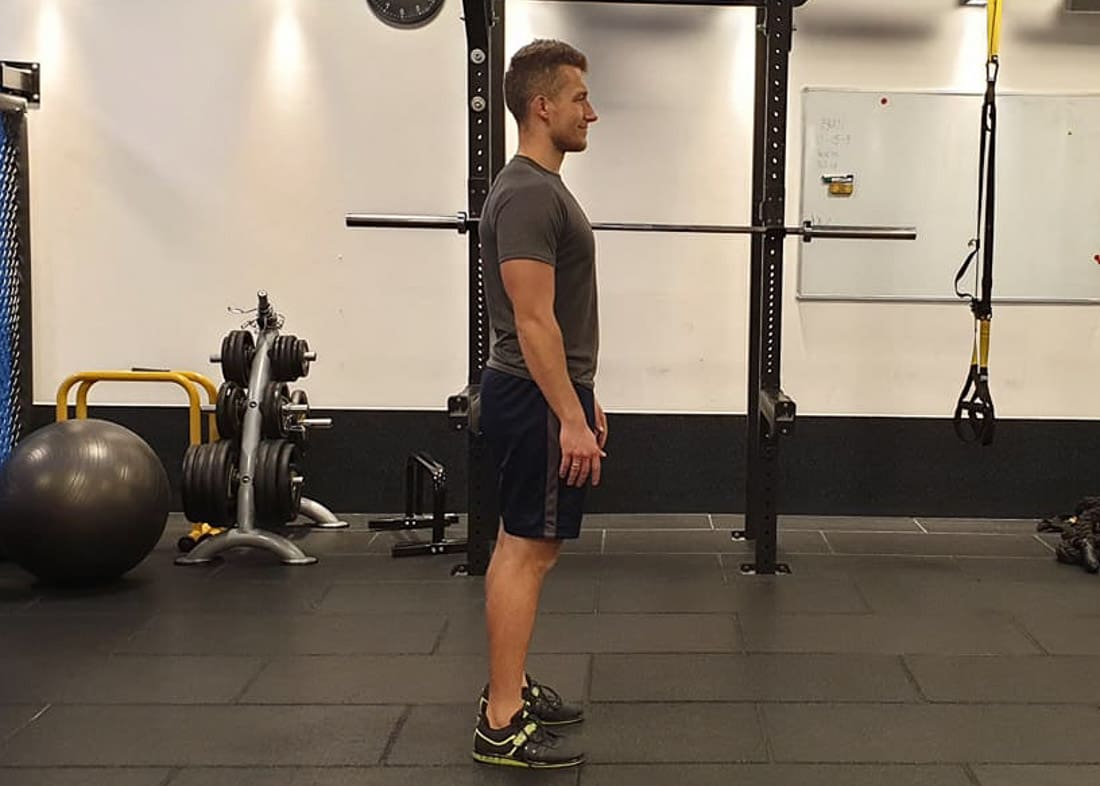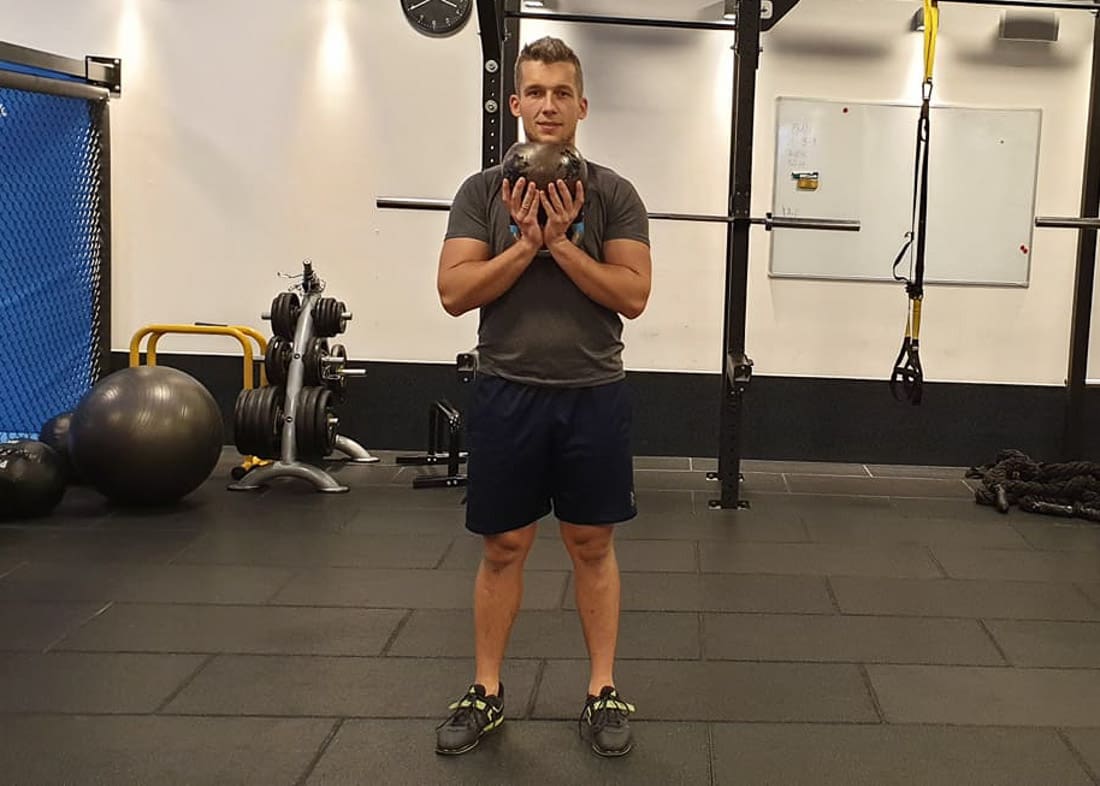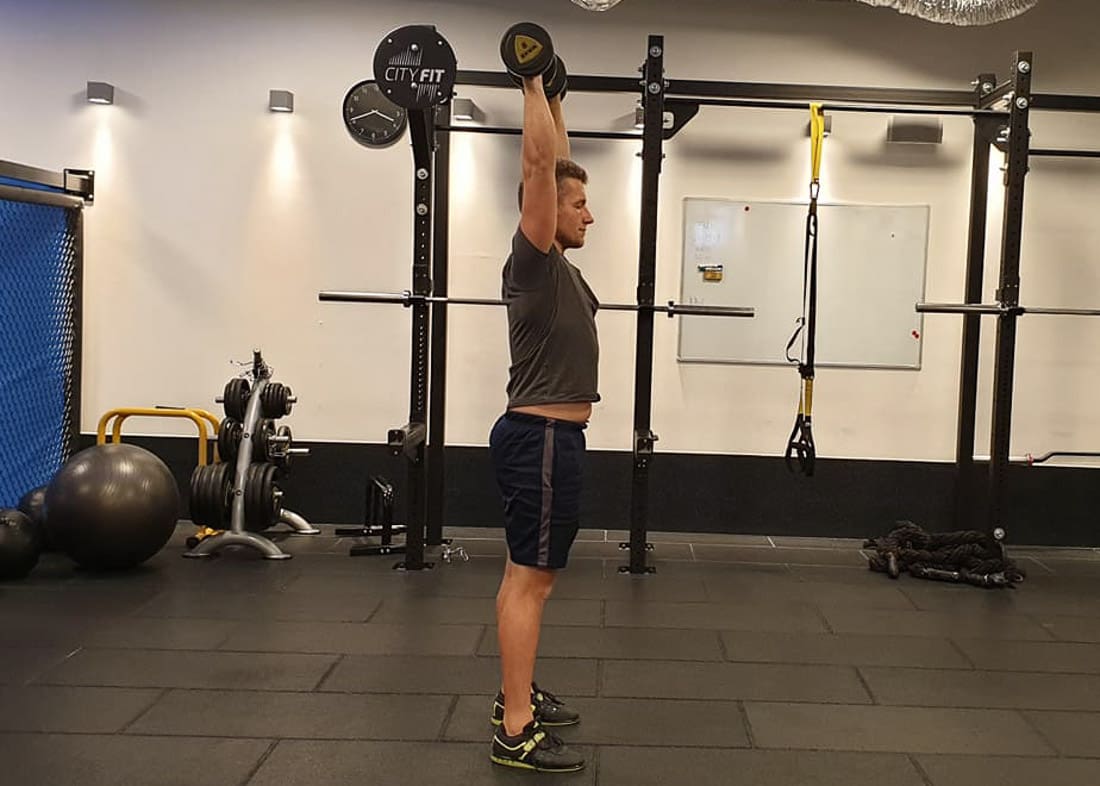Why Squats for Cycling?
This is the basic question you should always ask yourself when selecting the exercises for your cycling training plan. Does it have a specific purpose and will it help you to achieve better results in cycling and mountain biking, because doing exercises only because they look nice misses the goal – if you spend your time on something, use it as effectively as possible. Following this line of reasoning, let’s consider what benefits you can gain from doing squats and whether it’s worthwhile to do some strength training.
Squatting is one of the natural movement patterns we have known since we learned how to walk. Watch how a small child lifts objects from the ground – makes a perfect squat, but in a sedentary lifestyle we lose this pattern and we have to work on regaining good technique during squatting, depending on our mobility it takes one more or less time. This is a good argument to include the squat to your plan and use it to improve the quality of everyday life.
But to get to the bottom of the matter, what can a squat do to improve your cycling?
– It’s a very complex global movement that involves both leg muscles, but also requires a lot of good upper body and CORE muscle engagement, so doing one exercise really strengthens the whole body.
– Strengthening leg muscles reduces the risk of injury. Well-working and strong muscles ensure proper movement in joints, protecting them against injuries. Most of the injuries that occur in sports result from the imbalance of muscle work – in a properly performed squat, both quadriceps and hamstrings with buttocks work hard. In the next part of the text I will try to explain step by step how the correct technique of squats should look like. However, we have one very important argument left to add, which is in favor of doing squats in your training routine.
– During the aging process, there is a natural loss of muscle mass called primary sarcopenia. So as you get older, you have fewer and fewer muscles that are necessary to perform any physical activity safely – the only way to fight this problem is through strength training with extra weight, followed by anabolic processes in your body to prevent muscle mass loss. Squats are one of the exercises used in strength training, allowing you to strengthen your body and stimulate it to build stronger muscle fibers. Knowing this, consider whether it is worthwhile not to do squats when thanks to them you will be able to enjoy cycling until late old age and much better health in relation to your untrained peers. In my opinion, it is very worth to get tired and choose squats, which, due to their multitasking and multitude of benefits, are undoubtedly a great exercise.
Which kind of squat should I do?
This is another important question that you have to ask yourself before using squats in your training routine. Below I have prepared for you a carefully described technique of 3 variants of squats that will help you get the best results. I have put them together for you in levels of difficulty – from the easiest version to the most difficult, if you have never performed strength training, start with air squat, which should be remembered from school PE classes. If they don’t cause you any problems, then go to goblet squats. The most difficult option will be a dynamic squat, which we call thrusters for the most advanced students of strength training.
BASIC LEVEL: AIR SQUAT
- Stand upright, with your feet at hip width. The feet should adhere to the ground at 3 points (toe, little finger and heel area) throughout the duration of the exercise.
- Breathe deeply into your abdomen and try to tighten it by compressing the air in your stomach. Imagine if you would like to squeeze your belly button towards your spine and keep this tension.
- Start the movement by receding your hips, keeping your abdomen tense at all times. Lower your torso until your hips are below your knee joints.
- Make sure that your knees do not come down to the inside of your body when you move, in which case you risk injury to your knees.
- Then go back to your starting position by tightening your buttock and straightening it to the end of your hip.
For good results try to do this exercise after 10-12 repetitions in 4-5 sets, to get your muscles involved as much as possible in this exercise, try to move down for at least 4 seconds, if you like a challenge, add a 5-15 second pause in full sit down in each repetition. Thanks to this, your body will engage more muscle fibers to work and you will get better results from this exercise. Make the upward movement as fast as you can and end it with a very strong tension on your buttocks. Keep the break between the sets about 30-60 seconds.
MEDIUM LEVEL: GOBLET SQUAT
- Stand upright with your feet set at hip width, can be set gently with your fingers facing outwards. Keep 3 support points throughout the exercise. Hold the weight of kettlebell / hantli / platform in front of your chest.
- Tighten your CORE muscles and maintain this tension throughout the exercise – it is this tension that will allow you to exercise safely.
- Start the movement by pulling your hips back and lowering them slightly below the knees. At the full squat, the elbows should be between the knees or gently above the knees.
- Then return to your starting position as soon as possible by tightening your buttocks with all your might.
To increase the strength of your legs, choose fewer 6-8 repetitions and in this case, also extend the break time to 90-120 seconds, do 3-5 sets. Return as fast as you can, just as you did in the first exercise. If you want to increase your muscle endurance, you can use a small load and a large number of 15-20 repetitions, in this case shorten the break between the sets to 30 seconds.
DIFFICULT LEVEL: THRUSTER WITH DUMBBELL
- Take the same starting position as in the goblet squatting except that you are holding a dumbbell at shoulder height.
- Tighten the CORE muscles and start the movement by moving your hips back and down below the knee line. When you go down the dumbbell, you keep the same position at all times.
- When standing up, you start to squeeze dumbbells over your head with the dumbbell rotation – so that your thumbs are facing inwards. In the final phase, the arms should be fully straightened.
- Then you go back to the position of a full squat, in the meantime, lowering the weight to the starting position (at shoulder height).
This version of the exercise is much more dynamic and can help you shape your ability to generate as much power as possible through your body, i.e. it will teach you how to use your acquired power in more stable exercises, in dynamic movements such as cycling. In this case, try to focus on more load and fewer repetitions of 3-5, you can do up to 5 sets and the break between the sets is 120-180 seconds. But don’t let your ego obscure your common sense and use loads big enough to maintain impeccable technique. If you want to strengthen the endurance of your body, take advantage of the low load and large number of repetitions, or you can use this exercise in circuits to increase the intensity of your workout. In this case you can do about 15-20 repetitions in each 3-5 sets of exercises, the break between the sets should be 30-60 seconds, the key is to choose the right load, which will force you to make a lot of effort, but will not make your technique far from perfect.
I hope that after reading this article, you won’t have any more doubts about including sit-ups in your training routine. You will certainly not regret this decision, and in the next few years your body will thank you for this sacrifice.
Article by Damian Chlanda, Cyklopedia
No products found.






























